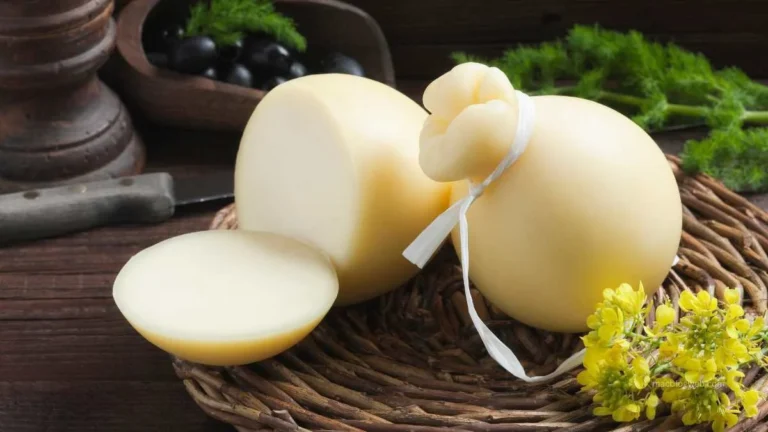Caciocavallo, a name derived from the Italian words “cacio” (cheese) and “cavallo” (horse), is an intriguing and historically rich cheese that has been a staple in Southern Italy for centuries. This cheese belongs to the pasta filata family, which also includes well-known cheeses such as mozzarella and provolone. Characterized by its unique teardrop shape and distinctive aging process, caciocavallo is not just a culinary delight but also a piece of Italian cheese-making heritage.
Historical Significance
The origins of caciocavallo can be traced back to ancient times, with its first mention around 500 BC by the Greek physician Hippocrates, who noted the Greeks’ adeptness at cheese-making. The methods for its production were later detailed by Columella, a Roman agronomist, in his comprehensive treatise on agriculture, “De re rustica,” around 35-45 CE. This makes it one of the oldest documented cheeses in the world, a testament to the enduring techniques of cheese artisans over millennia.
Production and Characteristics
Caciocavallo is primarily produced using cow’s or sheep’s milk, although the traditional and most revered varieties often come from the milk of local breeds specific to a region. The cheese-making process involves heating the milk and adding rennet to form curds. These curds are then stretched and kneaded while still hot, a method known as pasta filata, similar to the process used for making mozzarella.
After shaping, the cheeses are tied with rope and hung to age, which contributes to their notable teardrop shape. Aging times can vary, but typically, it is aged for at least two months and can be aged up to two years or more, developing a harder texture and more intense flavor with time. The rind, which becomes edible as it ages, encases a smooth, pale yellow to white interior with a mildly spicy and tangy flavor reminiscent of a matured provolone.
ALSO READ: THE ULTIMATE GUIDE TO MAKING HOMEMADE GARGANELLI PASTA
Regional Varieties
Caciocavallo cheeses vary significantly from one region to another, each adopting unique characteristics from local environmental conditions and traditional practices. Some of the notable varieties include:
- Caciocavallo Podolico: Made exclusively from the milk of the Podolica cattle breed, this variety is renowned for its depth of flavor, which includes hints of herbs and wild fruits, reflecting the diverse flora the cattle graze on. It is considered a delicacy and commands a higher price due to the limited production linked to the small Podolica cattle population.
- Caciocavallo di Castelfranco: Originating from the Miscano Valley in the Apennines, this type is celebrated for its slightly sweet taste and firm texture. It is often used in local culinary dishes and is a favorite for grating over pasta and risottos.
- Caciocavallo di Godrano: Often referred to as caciocavallo Palermitano, this variety from the area around Palermo is known for its sharp, piquant flavor profile, making it an excellent table cheese that pairs well with robust wines and crusty bread.
Culinary Uses
Caciocavallo cheese is incredibly versatile in the kitchen. It can be served sliced in antipasti platters, grated over pasta dishes, or even melted in sandwiches and casseroles. Due to its high melting point, it is also perfect for frying or grilling, often served as ‘caciocavallo al forno’ or baked caciocavallo, a popular dish in Southern Italian cuisine.
Cultural and Economic Impact
Beyond its culinary applications, it plays a significant role in the local economies of Southern Italian regions. The cheese’s production supports rural communities and sustains traditional farming and cheese-making practices that might otherwise be at risk of disappearing in the face of industrial agriculture and globalization.
Furthermore, it holds a place of pride in Italian food culture, celebrated in festivals and dedicated events that draw tourists and cheese aficionados from around the world. Its story is featured in culinary tours and tasting sessions that highlight the rich history and diversity of Italian cheeses.
Conclusion: Caciocavallo
Caciocavallo is more than just a cheese; it is a cultural artifact, embodying centuries of Italian tradition, local biodiversity, and artisanal craftsmanship. Each variety tells a story of the land it comes from and the people who have perfected its production over generations. Whether enjoyed on its own, as part of a dish, or within a cheese platter, it offers a delicious insight into the heritage and culinary prowess of Southern Italy.
